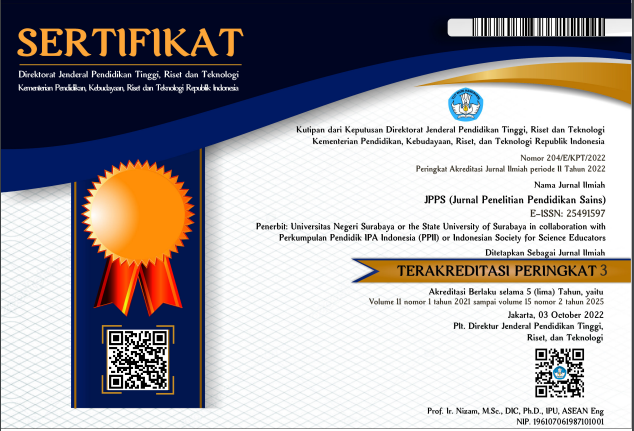ACCREDITATION STATUS
JPPS is Nationally Accredited by Kemristekdikti
The journal is classified into the national's 3rd highest cluster for reputable journals in Indonesia No SK: 204/E/KPT/2022 Started from: Vol 11 No 1 2021, Until Vol 15 No 2, 2025












